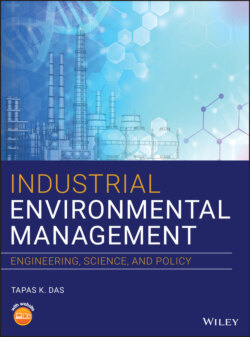Читать книгу Industrial Environmental Management - Tapas K. Das - Страница 31
1.10.2 Inventory Inputs and Outputs
ОглавлениеOnce the initial analysis has determined that total throughput is not possible, and that wastes will be generated, the next step is to assess the industry's inputs and outputs, and to inventory all the outputs (“wastes”). A diagram of the inputs and outputs of a system like that of Figures 1.2, 1.5, and 1.6 are then used to compile basic overview of the company's resources and needs. From this information, design engineers and process specialists can attempt to modify the manufacturing process so that it can become a Zero Emissions system.
Extracting raw materials and processing them imposes significant environmental burdens. An analysis of the industrial metabolism of the product (i.e. its input, materials use, and life cycle expectancy) will help determine the path of least environmental impact. Some materials choices will yield better throughput or by‐products that are more suited for use as an input for another industry.
Additional audits and inventories may be needed to determine manufacturing efficiency by percentage of input wasted, to quantify amounts of waste landfill by type of material, to account for amounts of materials collected for recycling, and to identify major emissions of waste heat and the site and amounts of wastewater discharges. Analysis of these outputs may reveal the most effective ways to reuse these outputs and help to determine which industries could use the wastes as raw materials. For example, at the Namibian brewery, spent grain, excess heat, and wastewater all have potential uses in producing food items.
